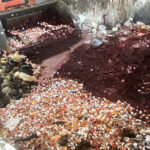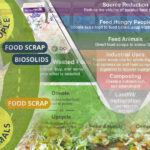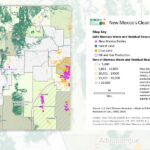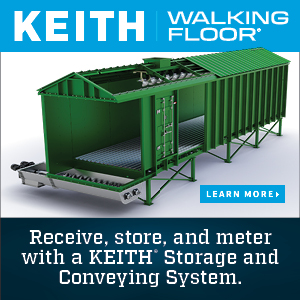Nora Goldstein
In August 2016, Bob Powell founded Brightmark Energy “to think about environmental problems that were not being addressed well,” he recalls. “I knew wind and solar were amazing, but there were other areas — waste and renewable natural gas (RNG) — that had opportunities to tap.”
In April 2020, Brightmark Energy, a San Francisco-based company, rebranded as Brightmark, “to better reflect the company’s mission and focus,” noted a press release. “The new name signifies the company’s global growth trajectory in support of its mission to build a world without waste, as well as the outputs Brightmark produces other than energy, including clean water, wax, and the materials used to produce new plastics. Advanced plastics recycling, or plastics renewal, and renewable natural gas via anaerobic digestion will remain at the core of Brightmark’s waste solutions.”
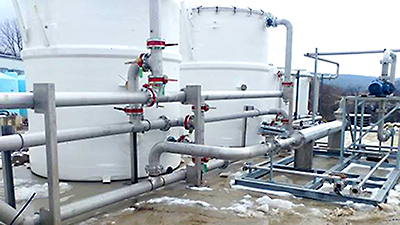
Components of the Yellowjacket project in New York State.
BioCycle Editor Nora Goldstein interviewed Bob Powell, founder and chief executive officer of Brightmark, in March, prior to the rebranding. Powell spent most of his career in the energy “space,” working with large independent power producers on various forms of power generation, along with some other fuels. “My experience involved lots of types of power generation from not so clean sources,” he recalls. “I was a partner at Arthur Anderson and Price Waterhouse Cooper [management consulting firms] so was fortunate to have experience helping companies acquire assets and grow.”
Powell’s move into the clean energy space was in part due to “observations traveling internationally and looking at environmental issues, e.g., sanitation and the difference in quality of power facilities being built in the U.S. and Europe,” he explains. “What I saw troubled me a fair amount. Eventually, I joined Pacific Gas & Electric Company (PG&E) in San Francisco and was its chief financial officer. The timing was good as the utility was a great leader early on in the renewable space, including initiation of solar power projects.”
Eventually, Powell left PG&E to run his first company, Solar Power Partners, which developed solar projects across the U.S. He sold that company to NRG Energy, and took a deep dive into “identifying solutions that solve big environmental problems — solutions implemented in a way with businesses and communities that are sustainable,” he says.
That mindset underlies Brightmark’s business plan and has guided its approach to project development and partnerships. For example, Brightmark has entered into partnerships with a number of dairies to generate RNG. “The path to achieve long-term economic and environmental sustainability is inherent in our farmer partnerships,” emphasizes Powell. “We don’t have one business model that we use with farmers. We go with what works best, and does not impinge on the farms’ operations. That is essential to achieving long-term sustainability.”
One of Brightmark’s most recent projects, named Yellowjacket, is in western New York State. The dairy biogas project is partnering with a total of 6 farms with existing anaerobic digesters throughout the region; methane will be extracted from 265,000 gallons/day of dairy manure and converted into renewable natural gas (RNG) and other by-products.
Another is a partnership is with 3 western Michigan dairy farms. In this case, farmers have each signed supply agreements with Brightmark indicating their intent to provide the company with dairy manure from their herds that will serve as feedstock for new digesters to be built on one of the 3 farms. The resulting RNG will be injected it into a nearby gas pipeline. In this case, the digested manure will be transported to a county wastewater treatment plant, enabling the farms to reduce land application of manure and improve their nutrient management practices.
BioCycle asked Bob Powell a range of questions relating to the business of biogas, as well as possible new opportunities in the anaerobic digestion space.
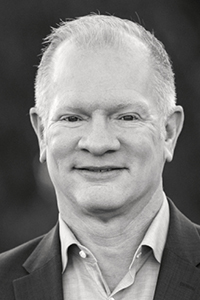
Bob Powell
Business Of Biogas
BioCycle: How did Brightmark evolve into the anaerobic digestion space?
Powell: It took us about 18 months to get to AD. We spent a lot of time, very pragmatically, in discovery mode, and focused on the viability of making anaerobic digestion and biogas big enough to drive change. For example, landfill gas is a good area, but from a long-term perspective, landfill gas projects are not as profound, opportunity-wise, as other projects, especially because they have less benefit from a greenhouse gas/carbon intensity standpoint. Brightmark looks at what has the greatest environmental impact. When we take AD technology and apply it to opportunities related to animal and other forms of waste, then that presents significant greenhouse gas (GHG) benefits.
BioCycle: What was the company’s first AD project?
Powell: Our first was actually at a poultry processing facility in Sumter, South Carolina. Brightmark invested in a covered lagoon digester project that uses a combined heat and power system, and sells power to the grid.
BioCycle: Since your first project, Brightmark has been working primarily with dairies. Do you see more opportunity there?
Powell: We’ve been very fortunate to establish credibility fairly quickly within the dairy sector. When we first began to focus on dairies, folks didn’t know who Brightmark was. Now they are coming to us because they are hearing about our projects from other dairy farmers. There is this ‘snowball’ effect! Just in the last 2 years, we have partnered on biogas projects with 20 dairy farms in six states. We do see a great continued opportunity in working with more of our dairy partners.
BioCycle: What is Brightmark’s criteria for moving forward with a project? For example, is it a minimum number of dairy cows, or a certain volume of manure?
Powell: We are generally looking at a herd size of 10,000 to 20,000 animals as an entry point. That enables us to invest in the infrastructure — not just the digester, but also the capability to condition the biogas and deliver RNG for injection. If a single farm does not have a minimum of 10,000 head, we can still move forward if there are opportunities to aggregate with neighboring dairy farms.
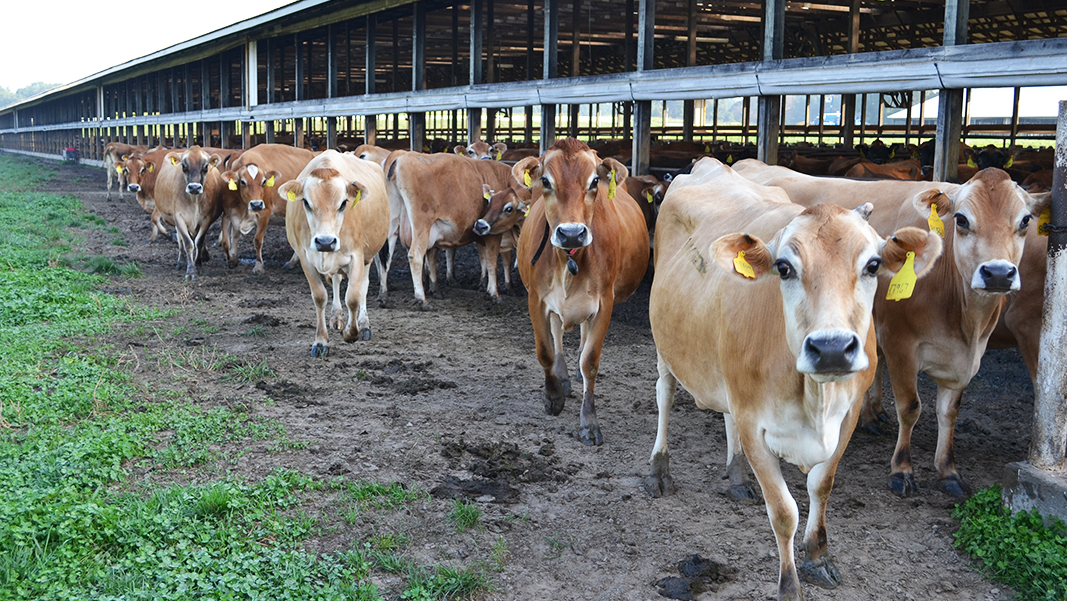
Most of Brightmark’s current projects are targeting dairy manure.
BioCycle: What is your typical business arrangement with the farms?
Powell: We don’t have one specific business model when we work with farmers. We go with what works best. For example, with the Yellowjacket project, we are working with existing digester infrastructure, so have a leasing arrangement. But we also have projects where we go off farm and buy land to build the digester and install biogas upgrading equipment. The off-farm model works when there is a conglomeration of farmers in an area.
Our manure supply agreements are standard contracts, e.g., over a set period of time we will buy your manure. But that supply must be dependable over that period of time.
BioCycle: Please describe how projects are financed.
Powell: We use a variety of financing tools. It gets back to what the farmer is comfortable with. A lot of the farms we partner with already have digesters on their property, but they may not want to actually operate the digester and definitely do not want to be in charge of producing RNG. In the case of the Yellowjacket project, the New York State Energy Research and Development Authority is providing initial project planning funding. Brightmark’s investments will include upgrading each digester to new technology capable of cleaning the methane gas and converting it into high quality RNG for use in heating or transportation. More broadly a farmer can expect us to come in and build the new or upgraded facilities with no cash outlay for the farm. We operate and maintain the projects ourselves thus allowing the farmers to focus on what they do best and not to have to worry about operating our projects.
RNG, Digestate Markets
BioCycle: Key to an RNG project’s success is natural gas pipeline access. Is that a forte of Brightmark’s given your work with utilities prior to starting the company?
Powell: Our strength is our ability to execute. Pipelines are one element. If we led with that, it wouldn’t be a strong business approach. Pipelines are one of many things you need to be really good at.
BioCycle: Does Brightmark foresee strong markets opening up around digestate, especially as major food manufacturers, such as General Mills, are making commitments to regenerative agriculture and digestate is a renewable fertilizer?
Powell: Digestate is a market opportunity that the industry needs to focus on. We envision creating partnerships with food manufacturers and their suppliers to optimize their agricultural inputs and reduce environmental impacts caused by nitrogen and phosphorus leaching from synthetic fertilizer applications, which create problems like algal blooms.
The biggest challenge to supplying digestate products to meet the large-scale demand from major food producers is having critical mass. In our initial discussions with companies, we were told to come back when we ‘hit scale.’ Digestate manufacturers must have massive scale and capacity to be a player in this marketplace. We have hit that now, and see huge opportunities for Brightmark in that market.
BioCycle: You noted earlier that when you left PG&E, you were seeking “solutions that solve big environmental problems.” One metric to measure if that is being accomplished is reduction in carbon dioxide (CO2) emissions. Brightmark has a goal of reducing 5 million metric tons of CO2 by 2024. Is the company on track?
Powell: We will offset over 500,000 MMBtu of CO2 each year with our renewable natural gas projects that are either operational or under development/construction. If you do the math, our current set of projects won’t deliver 5 million metric tons of reductions. In order to do that, we need to execute more projects — to lay out a plan where we move the needle. Brightmark has very specific plans within and beyond the dairy sector to significantly increase the needed carbon reductions. This includes the plastics recycling side of our business, which also will generate ultra-low sulfur diesel as well as avoid traditional fossil methane and crude oil extraction.
In short, we started Brightmark in 2016 to turn our attention from other corporate ventures to being part of some of the most transformative innovations in our fight for the environment. Our planet is in need of environmental solutions, and we don’t have time to waste.



